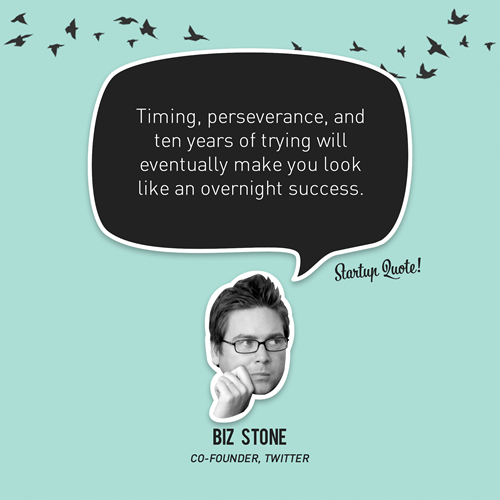The first words out of her mouth were, “You saw it on Twitter, didn’t you?”
Of course I did. Really, could it have happened any other way?
It’s last Wednesday night. I’m going to the Blue Note, Columbia’s big music venue, to see Jakob Dylan, son of Bob, writer of the 1996 smash “One Headlight.” The guy headlined the VMAs back when the VMAs featured songs played on guitar. I only really know three of his songs, but I also I live a block away from the venue, and I’ve pretty much made it my policy to see as much live music as I can while I’m here. So I’m going.
And it was just that kind of day. It started too early, and it ended too late, and whatever the Kübler-Ross equivalent is for startups, I went through it all on Wednesday: Excitement and terror and fear and hope and ambivalence and promise and anger.
And it’s the end of the day, and I’m just ready to see some live music, crash at 11:15 and do it all again at 6 a.m. I log onto Twitter to check on something, and I see this tweet from my friend, Colleen. The tweet’s not directed at me or anything. But she’s at the Jakob Dylan show, it turns out. I text her with a, “You’re at the Blue Note? Want to meet me for a pre-show beer?”
Two things are notable here, before I go any further:
1. My friend Colleen lives in Seattle, not mid-Missouri.
2. I have never met Colleen in person.
The first is a bit easier to explain. Colleen’s a Missouri girl who, like me, went to Mizzou. Then she moved out to Seattle for work. She was back in the midwest last week for two different weddings.
As for the second…
Colleen and I are both operating in a pretty similar realm: We’re both interested in telling uncommon stories. I’ve got Stry, with its undercovered stories in undercovered areas. Colleen’s got TabuTalk, and its mission to help young people give voice to the voiceless.
A mutual friend introduced us a little over a year ago. He thought that with both of us chasing the entrepreneurial dream, we should talk. So we went back and forth on Facebook for a while. Then upgraded to Gmail conversations. She’s made a few introductions for me to some of her TabuTalk co-conspirators. These days, I’ll see an interesting link and shoot it her way. When I sent out a call for postcards this fall, she sent me one.
Point is: Colleen and I have known each other for a little while now, and we’ve tried to be helpful to each other on these entrepreneurial journeys, and yet we’d never actually met.
We are, I suppose, Internet friends.
And no, she does not live in her mom’s basement. Neither do I (anymore, at least). We did not meet on Craigslist. This is not some rehashing of the plot of “You’ve Got Mail.”
We just both happen to be young, ambitious, semi-clueless (well, me, at least) and a little out of our minds as far as the startup thing goes. We’re trying to help each other out where we can. We have a few dozen friends in common, and all things considered, we probably should have met in college.
We didn’t.
We’re Internet friends, instead.
But then last Wednesday night. I check the Twitters for a moment. And there’s this tweet from Colleen:
Feelin' at home at @the_blue_note. thanks @petemcdevitt!
— Colleen McDevitt (@colleenmcdevitt) November 10, 2011
And so I shoot her a text, and she sends one back. I walk over to the Blue Note, walk upstairs, order a beer… and she’s at the end of the bar. Of course I found out about her being at the show through Twitter, I tell her. We hug, chat for a bit. I tell her how funny it is to actually meet her in person. Feels like I’ve known her for a long time, I say, and I’d never even known what she sounded like.
Colleen processes this bit slowly.
“We’ve really never met in person?”
Nope.
“Are you sure?”
Yep.
She says she wants to take a photo to send to our friend, Chris. The bartender takes it. My head extends beyond the frame.
14 months as Internet friends, and we finally get photo proof that we’ve actually met, and it doesn’t include my face.
Really, could it have happened any other way?









